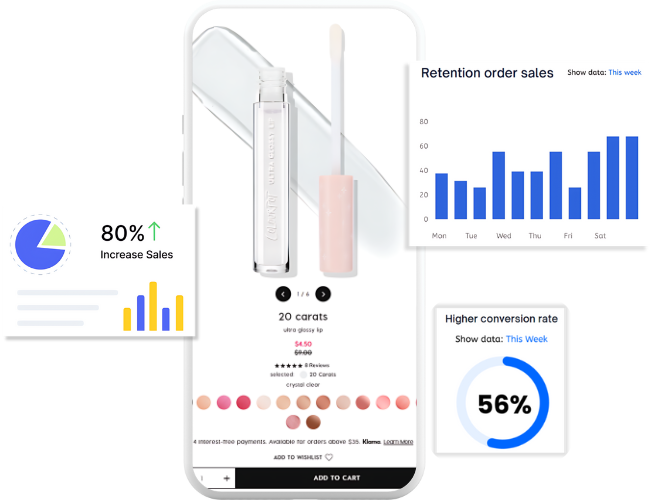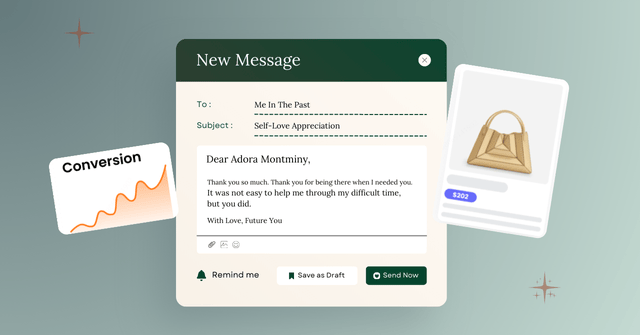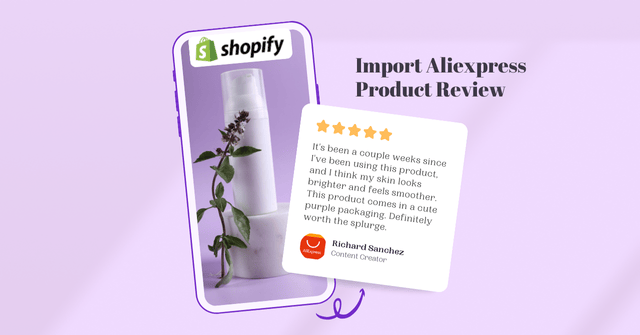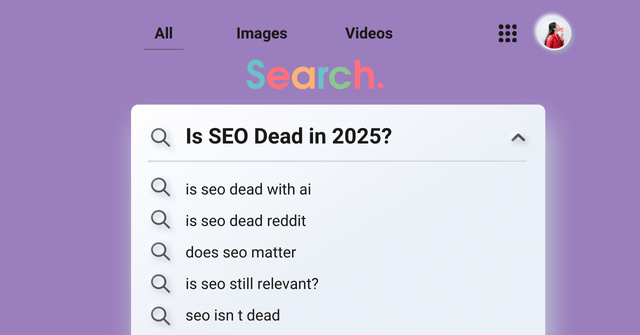Choosing the right e-commerce tech stack is essential for the success of not just online stores but also the finance, gaming, entertainment, and AI industries. Simply put, tech stacks are among the core components of just about any business or organization that provides online services and saves user-generated data.
E-commerce tech stacks aid in streamlining developments that enhance the scalability and sustainability of online stores. Therefore, choosing the right tech stack will also help you avoid or better manage problems in the long run.
In this article, you will learn about e-commerce technology stack tools, elements, and factors to consider when choosing tech stacks.
What Is An eCommerce Tech Stack?
An e-commerce tech stack is an assemblage of digital tools, apps, platforms, frameworks, and programming languages used in running e-commerce websites and applications. You can think of a tech stack as a technology sandwich made up of different technologies layered on top of one another to create a solid infrastructure. For example, the Shopify tech stack is made up of apps, tools, and programming languages like Python, NGINX, Lua, Vagrant, Datadog, and Slack, just to mention a few.
In online stores, tech stacks work together to optimize and automate day-to-day tasks across all e-commerce processes. From marketing, sales, and order fulfillment to customer service, returns, payment processing, and order tracking, a good tech stack ensures all areas are covered.
Although each e-commerce store is unique and requires its own stack, every tech stack has the same structure, just with different tools. Learning how to build your commerce stack will require you to learn the structure of a tech stack.
E-commerce Web Development Tools
A technology stack is a structure composed of two main components (the (frontend and the backend), which are connected through APIs. Therefore, the technology stack of a website or app will contain tools in these three categories.
Front-end
The front end of a tech stack is made up of external-facing apps and programming languages used in developing the user interface for your customers. For the website tech stack, this may mean Javascript and HTML, while for mobile apps, it may mean Android or iOS
Front-end development for e-commerce stores is what makes your website or app aesthetically pleasing and user-friendly. If you’re creating a website from scratch, you may need to learn different programming languages or hire a web designer.
Tools used in the front-end include:
- HTML (Hypertext Markup Language): used for developing web pages
- JavaScript (JS): used for adding dynamic and interactive elements to websites
- CSS (Cascading Style Sheets): used to add style to HTML documents
- Flutter: a cross-platform tool
If you’re using an e-commerce platform like Shopify, the technology stack on the front end does not require coding expertise, though some knowledge of HTML and CSS may be useful.
Back-end
The back-end layer is made up of server-facing applications, languages, and tools that support your e-commerce website or app. This end is key to ensuring the reliable functionality of your store.
The main categories and tools in the back-end include:
- Programming languages like Python and Node.js for server-side runtime
- Databases like MongoDB and MySQL that help manage information and user-generated data
- Storage systems for storing and managing data
- A web server or big cloud provider to host your website or app
Elements of an E-commerce Tech Stack
E-commerce Platform
An e-commerce platform is where you build your online store, and it’s usually the first digital solution you’ll have to choose in your e-commerce stack. The e-commerce platform, brand name, and hosting provider you choose for your store will form the skeleton of your full-stack digital commerce store.
There are a variety of e-commerce platforms to choose from to develop a well-designed, highly functional e-commerce store. Some of the leading platforms include:
- Shopify
- WooCommerce
- Wix
- Squarespace
- BigCommerce
- Square
The e-commerce platforms you choose may influence your tech stack, as each platform has tools and apps that only work on their system.
Payment Gateway Integration
To process payments effectively, you’ll need to integrate a payment gateway process into your website or app. A payment gateway is a tool that e-commerce stores use to process and authorize online payments like digital wallets, electronic bank transfers, and debit or credit cards.
The right payment gateway integration will allow you to accept online payments, ensure transaction security, and improve conversion rates. Therefore, you should choose a payment gateway that integrates with your tech e-commerce store to enhance the customer experience.
Remember, payment processes usually work on the front end; therefore, customer experience and security during payment should be your top priorities. You can add a conversion tool like e-translate to let your customers shop in their local languages and currencies.
Popular payment gateway integrations include:
- Paypal
- Stripe
- Square

Easily translate store into multi-languages & multi-currency
Cloud Services and Hosting
These two elements work at the back end of an e-commerce tech stack, where data management for your store occurs. Your hosting provider gives you the server(s) you need to store and maintain your site’s files.
The different types of e-commerce hosting types include cloud-based, VPS, SaaS, and dedicated hosting. Many merchants prefer adding cloud hosting to their tech stacks because it allows them to easily move their e-commerce stack to the cloud. Big cloud providers such as Amazon Web Services allow e-commerce migrations, which are handy when scaling and updating inventory.
Order & Inventory Management
Order and inventory management tools are must-haves on any tech stack of websites or e-commerce apps. These tools ensure efficient real-time processing of orders and tracking of inventory status. As a result, you need robust order and inventory management systems to keep track of orders coming from multiple sales channels and update stock levels. The best order and inventory management systems also allow store owners to set up automatic reorder points and streamline the inventory replenishment process.
The most popular order and inventory management solutions you can add to your e-commerce stack include:
- Cin7 Orderhive
- Skubana
- Inventory Planner
- Order Desk
- Zentail
Returns Provider
Returns can provide a great opportunity for merchants to foster brand loyalty in customers. A store that provides a return process that is as effortless as the purchase process will surely get many repeat buyers.
Before adding a returns provider to your Shopify technology stack, you should ensure that their system can integrate with your inventory management system. This way, the provider can automatically update inventory and help you avoid stocking issues.
Some of the best returns management software for tech e-commerce include:
- Parcel Panel Returns & Exchange
- Happy Returns
- ReturnLogic
- Loop Returns

Make returns and exchanges hassle-free to reduce costs
Data Management and Reporting
It’s no secret that e-commerce stores generate, capture, and store a wealth of information. This is data you can use to predict trends, forecast demand, and optimize your store to improve customer shopping experience
The two primary data types you need to manage are customer and product data. Both of these data types require management systems that can automate data intake and organize the data across multiple channels to create a single source of truth. These systems also help you secure, filter, cleanse, and visualize your data, thus making them important elements in your e-commerce technology stack.
Data management and reporting tools include
- Plytix
- Akeneo
- Netsuite
- SAP
- Oracle
- Google Analytics
Analytics and SEO Tools
Analytics tools are essential for aggregating essential store data and insights and displaying them in an easy-to-understand format. With analytics tools as part of your e-commerce tech stack, you can easily gain valuable insight into your sales and revenue, website traffic, user engagement, and customer behavior. You can then use this information to make data-fueled decisions that drive growth
The best analytics tools include
- Adobe Analytics
- Google Analytics
- Kissmetrics
SEO tools work like analytics tools, but they specialize in providing traffic insights. Some SEO tools, like SEOAnt, automatically optimize page speed for better website performance.
- Google Analytics
- Semrush
- Ahrefs
CRM (Customer Relationship Manager)
As the name suggests, CRM tools help businesses manage customer relationships by collecting data on all customer interactions. These tools aggregate customer data on your store and social media channels to send personalized offers and track the customer’s shopping journey on your site. By adding CRM to your e-commerce technology stack, you can improve the effectiveness of your sales funnels and better nurture customer relationships.
Some of the top CRMs to consider include:
- HubSpot
- Klaviyo
- Salesforce Customer 360
Support and Service Tools
Customer support services are essential in encouraging customers to trust and be loyal to your brand. A great customer service experience can convert a one-time buyer into a repeat customer.
Adding an effective customer service and support solution to your website’s tech stack will allow you to easily manage interactions and relationships with your customers. These tools ensure addressing customer complaints promptly.
Some of the most popular solutions for customer service and support include:
- Simple
- TalentPop
- Intercom
- Totango
- Sprinklr
Marketing And Communication Tools
Last but not least, marketing and communication tools allow you to boost brand awareness, engagement, and conversion, improving sales and revenue. Although marketing and communication are broad areas, the best tools will help you streamline the creation of marketing campaigns to generate new leads.
Other marketing tools, like Loloyal, allow you to set up loyalty and reward programs that not only boost sales but improve engagement rates, too. There are many best marketing automation tools for just about any marketing channel you need.
Some of the top marketing tools include:
- Klaviyo
- Mailchimp
- Social Champ
- Hootsuite
- Omnisend
Factors to Consider When Choosing Tools for Your Tech Stack
Now that you know which tools to include in your tech stack, you need to consider the following factors so you can get the best tech stack for e-commerce:
Cost
Tech stacks can have between 5 and 20 tools, depending on the size of your business and the services you’re offering. Now, considering that each tool is sold separately, you may find yourself overspending on some tools, which may leave you unable to obtain other tools. Therefore, it is important to plan and allocate the appropriate budget for the tools to avoid exceeding your budget.
We recommend only going for the most important tools first and building a technical stack, meaning you only acquire the tools that you need. And since most tools have tiered pricing plans, you should go for the most cost-effective plan that also contains the needed features.
Compatibility
This is one of the most, if not the most, important factors to consider since an app that’s incompatible with your system is useless. Before adding a tool to your e-commerce tech stack, you first have to gauge compatibility with your e-commerce platform and other tools in your e-commerce stack.
The digital tools you choose should seamlessly integrate with your e-commerce system. Additionally, the tool should offer some level of customization freedom. The ability to customize components in the tool to match your brand theme will allow you to create a homogenous e-commerce landscape that captivates customers.
Remember to choose tools that allow you to combine multiple solutions through direct or third-party integrations.
Ease of Use
Every digital solution you choose to add to your e-commerce technology stack should be user-friendly. The best tools have an intuitive user interface that is easy to use, even for users with little technical skills. In addition to being easy to use, the tools should be easy to install, integrate, customize, and update.
Generally, digital tools come with a learning curve, which acts as a barrier if the curve is too steep. You should choose tools with a learning curve you’re comfortable with and provide learning aid tools. These learning materials include tutorials, FAQs, and expert training.
Customer Support
Finally, the quality of customer support service should be a factor you always remember to gauge with every digital tool you want to add to your stack. Most people forget to investigate the reliability of an app’s customer service.
Now, it’s no secret that digital tools sometimes have bugs, glitches, or completely crash altogether. In such instances, a great customer support service can help you avoid huge losses by quickly getting on top of the issue. You can find out how reliable the customer support of a tool is by looking at its reviews.
Tips on Building a Winning Tech Stack
Now that you know how to choose the right tools, you can tweak a few things to maximize the effectiveness of your e-commerce tech stack. Here are some tips on building the best tech stack for e-commerce.
Go Headless
Going headless in e-commerce involves disassembling your website to separate the front-end and back-end layers. Creating this divider allows you to separate technical solutions from the presentation side. Headless e-commerce makes it easy for developers to make important changes and adjustments down the line.
Avoid Plugin Overload
Although important in optimizing web pages and functionality, plugins can also be detrimental to a site in some cases. One such case is overloading a website with too many plugins, which end up slowing it down and affecting the customer experience. This is where you may start to see an increased bounce rate, declining SEO, and increasing errors and bugs.
To avoid overloading your website with too many plugins, you should carefully select the plugins you need and manage them effectively to maintain optimal performance.
Use Modern and Flexible Languages and Frameworks
There are over 9,000 coding languages in the world today. However, only a fraction of that is in use today. When building your e-commerce stack, opt for popular modern languages so you can save time on building and customizing websites and apps. Additionally, finding help, running tests, and making changes to modern languages and frameworks is easier than with old ones.
Prioritize Tools that Solve Your Greatest Challenges
Focus first on finding tools that help you address your site’s major pain points. These pain points can be high cart abandonment rates or a high return rate. With the right information, you can find almost any digital tool that aids in solving that particular problem.
Final Words
Hopefully, this article has helped you understand how the e-commerce tech stack can help transform any standard store into a thriving enterprise. Remember that knowledge is key to building an effective stack that elevates the customer experience. While the best tools may not always be obvious, if you follow your business’s unique requirements and goals, evaluate different options, and seek help, you can be sure to find something that helps.
FAQs About Ecommerce Tech Stack
Note: This blog was originally written in English and translated using an automated tool to make the content accessible to a global audience. We believe in sharing valuable insights with everyone and apologize for any inaccuracies. If you spot any errors, please feel free to contact us for corrections. Your feedback helps us improve and ensures the content’s value is fully realized.







